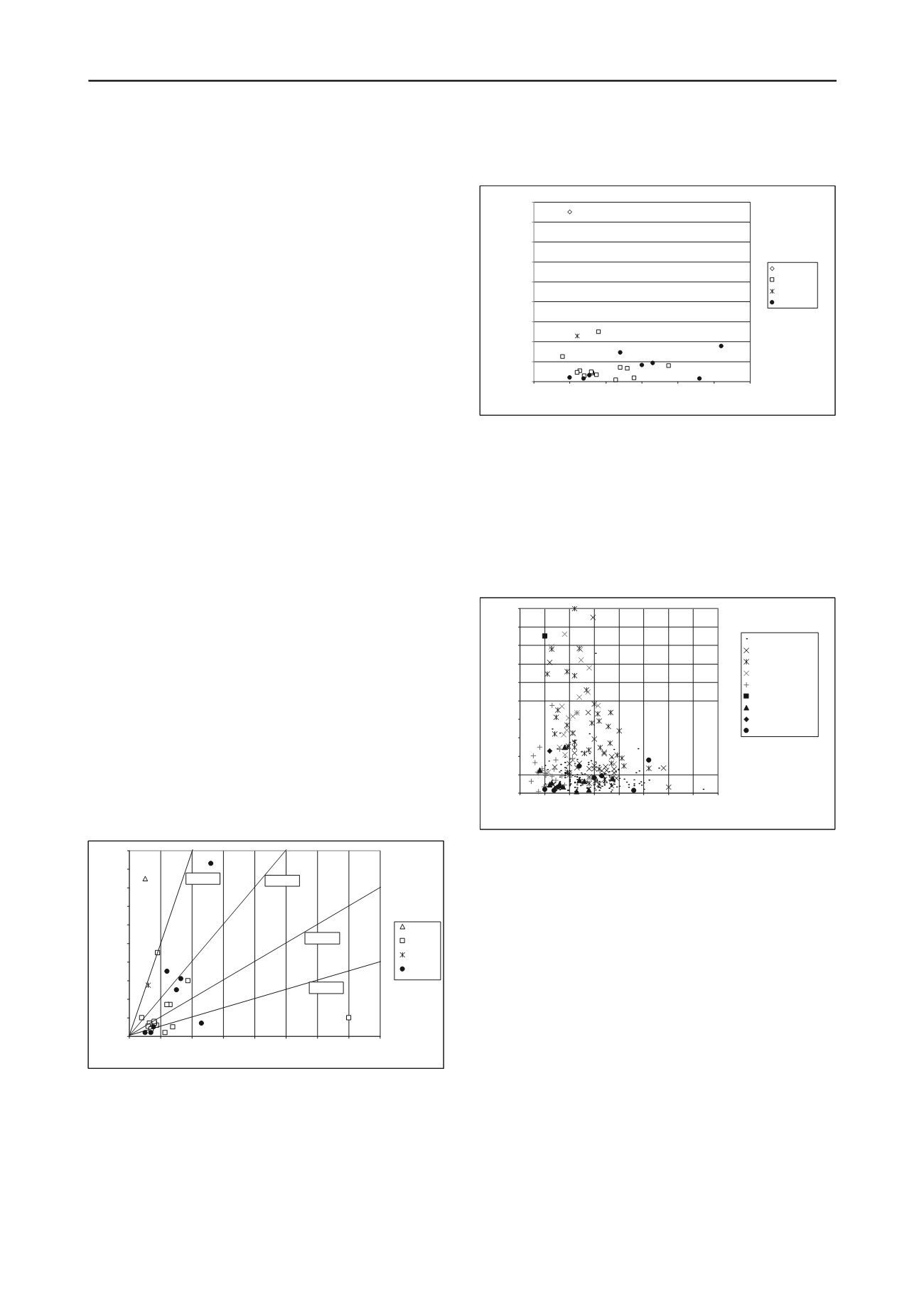
1919
Technical Committee 207 /
Comité technique 207
sustainable type of structure, due to lack of mortar, use of local
materials and providing habitat for animals and plants.
C. A. Wiggan et al.
present a numerical evaluation of
potential pore pressure reduction on retaining walls due to the
flow between piles. Not considering a wall of secant of
contiguous piles impermeable, lead pore pressure reductions
that act on the wall. Results of parametric evaluations are
presented, where the distance between the piles are varied,
showing significant pore pressure reductions. This approach,
however, leads to increased settlements at the surface.
C. Yoo and D.W. Jang
discuss results of laboratory tests
performed on reduced models, to evaluate the influence of
rainfall on the performance of reinforced earth structures. Test
results showed that wetting and drying cycles may have cause
additional wall displacements, especially for structures with low
safety factor.
5 SELECTED TOPICS RELATED TO RETAINING
STRUCTURES
The technical papers related to retaining structures cover a wide
range of topics, including:
Reinforced soil –5 papers;
Diaphragm walls – 4 papers;
Secant pile walls – 1 paper;
Sheet pile walls – 3 papers;
Soldier type walls – 3 papers;
Mixed in place soil structures – 5 papers;
Soil nailing and anchors – 3 papers;
Gravity and cantilver walls – 3 papers;
Others.
From this wide range, some topics were selected and are
discussed in more detail:
Horizontal displacements:
Earth pressures;
Soil nailing and anchor lateral friction;
Soil-cement mixtures.
Unfortunately, not all papers present sufficient technical
data, to allow analyses and comparisons.
5.1 Horizontal displacements
The selected papers present, in some cases, monitoring
results, specifically, horizontal displacements, which are
summarized in Figure 5 and 6.
0,0
10,0
20,0
30,0
40,0
50,0
60,0
70,0
80,0
90,0
100,0
0,0
10,0 20,0 30,0 40,0 50,0 60,0 70,0 80,0
Heigth (m)
Horizontal displacement (mm)
reinforced
soil
anchored
cantilever
top-down
1/2000
1/1000
1/500
1/200
Figure 5.Horizontal displacements x excavation depths.
Very variable results can be seen; horizontal displacements /
heights (H/D) from less than 1/2000 to more than 1/200 were
presented.
No clear tendency can be identified in figure 5. Visually, one
possible conclusion is that deeper excavations, apparently,
present lower D/H values, meaning that this type of construction
is, due to its complexity, designed and built with higher safety
margins and possibly, more rigid. Figure 6 below presents the
same data, showing normalized horizontal displacements and
excluding 1 extreme value: the 70 m high excavation (in rock)
presented by
S. Baghery
and
A. Guilloux et al.
0,0%
0,2%
0,4%
0,6%
0,8%
1,0%
1,2%
1,4%
1,6%
1,8%
0,0
5,0
10,0
15,0
20,0
25,0
30,0
Heigth (m)
normalized horizontal displaecement(%)
reinforced soil
anchored
cantilever
top‐down
Figure 6. Normalized horizontal displacements with respect to
excavation heights (depths)
In comparison to other retaining structures, relatively high
horizontal displacements (85 mm =>1,7%) were measured for a
reinforced earth structure (
M. Abramento et al
.). However, this
magnitude of displacement, according to common practice, can
be considered normal for reinforced soil structures (Sayão et al.,
2004).
Figure 7 shows the same results, plotted together with the
data presented by Long (2001).
0,0%
0,2%
0,4%
0,6%
0,8%
1,0%
1,2%
1,4%
1,6%
1,8%
2,0%
0
5
10
15
20
25
30
35
40
Heigth (m)
normalized horizontal displacement (%
Propped h<0,6H
Propped h>0,6H
soft soil at dredge level
LowFS
Cantilever
Reinforced soil (2013)
Anchored (2013)
Cantilever (2013)
Top Down (2013)
Figure 7. Normalized horizontal displacements x excavation heights,
including data presented by Long (2001).
It can be seen that the published horizontal displacements are
compatible with several other measurements as compiled and
published in 2001.
Other published databases are also compatible with the
presented data:
Leung and Ng (2007): 0,13 %H to 0,23 % H, depending
on soil stiffness;
Wang et al. (2010): 0,27%H to 1,5%H, depending of
retaining structure type and soil stiffness.
Common conclusion of Long (2001), Leung and Ng (2007)
and Wang et al. (2010) are that horizontal displacements are
affected mainly by safety margins, system stiffness, soil type
and construction method.
Finally, the conclusions presented by
R.J. Finno et al.
are
interesting: for the cases where small displacements are
measured, a significant part of these displacements may be
caused by time dependant behavior of concrete floor slabs.
5.2 Earth Pressures
Four papers deal specifically with earth pressures:
Ö. Bilgin
and E. Mansour, S. Jessee and K. Rollins
,
D. Loukidis and R.
Salgado
,
T. Maeda et al.


